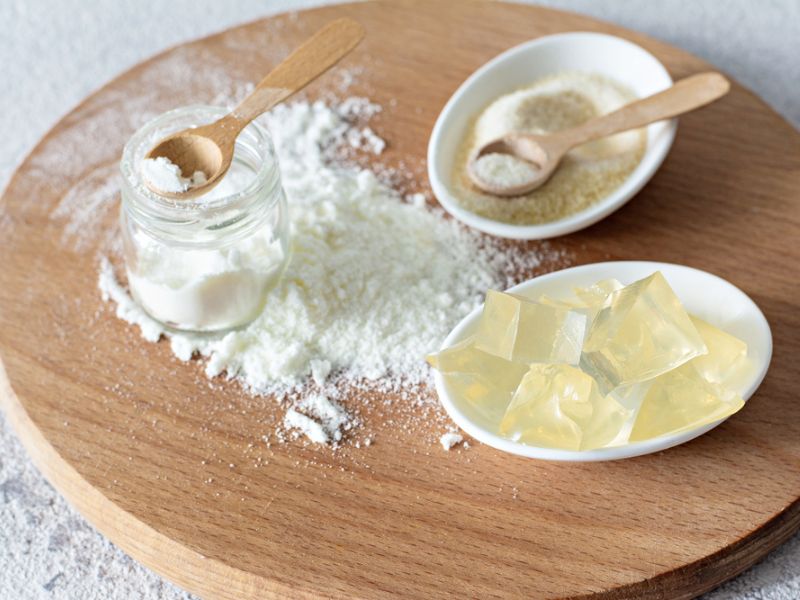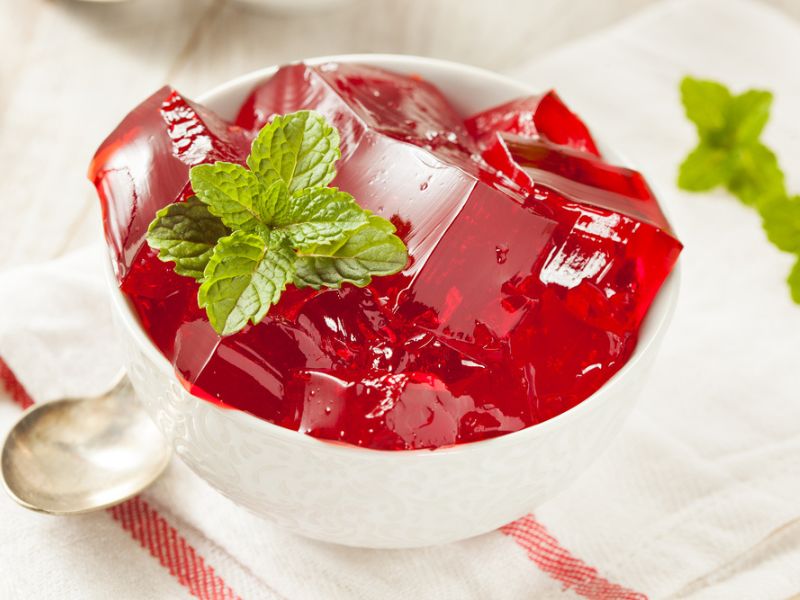In 2020, Americans spent more than $300 million on collagen supplements, and the global market is expected to grow. A key structural component of skin, muscles, bones, blood vessels, and connective tissue, collagen is the most abundant protein in our bodies.
Collagen is not commonly found in Western diets, and collagen production decreases with age, chronic inflammation, stress, nutritional deficiencies or smoking. Lack of elasticity, stiffer joints, gut or digestive issues, and longer recovery time after the injury can indicate collagen depletion.

Image Credit: Shutterstock/Drobot Viktoriia
Various collagen-based products are available, from collagen peptides to bone broth protein. Increasingly, I’ve noticed social media discussion on gelatin as a collagen “alternative.”
How Do Gelatin And Collagen Differ?
Collagen is nutritionally equivalent to gelatin. Gelatin contains about 6 grams of protein per tablespoon. Despite its high protein content, gelatin is not a complete protein. Collagen and gelatin share 19 amino acids. In terms of digestibility, collagen and gelatin are similar.
Jell-O Isn’t The Only Gelatin
Jell-O was a familiar food for most of us as children or in the hospital. Its semi-solid structure is due to the chains reforming imperfectly when refrigerated. The high-temperature energy causes heat that breaks apart the weak bonds in gelatin. Jelly beans, marshmallows, candy corn, and gummy bears contain gelatin.

Image Credit: Shutterstock/Brent Hofacker
A Focus Of Collagen Research Is Skin Elasticity
The quality of collagen supplement research varies. Typically, studies focus on improving skin elasticity, hydration, and joint functionality. Several social media forums mention gelatin as preferred over collagen for people who suffer from “leaky gut,” which is a hypothesis for conditions like fibromyalgia, irritable bowel syndrome and celiac disease.
There Are Many Ways To Enjoy Gelatin
It’s a practical difference: How do you consume collagen and gelatin? Drinking gelatin powder with either warm or cold beverages is challenging because it gels and has no taste. Drinking bone broth regularly, or adding hydrolyzed collagen to a warm or cold drink, is the best way to maximize the benefits of collagen or gelatin. There is no gelling of collagen peptides in warm or cold beverages.